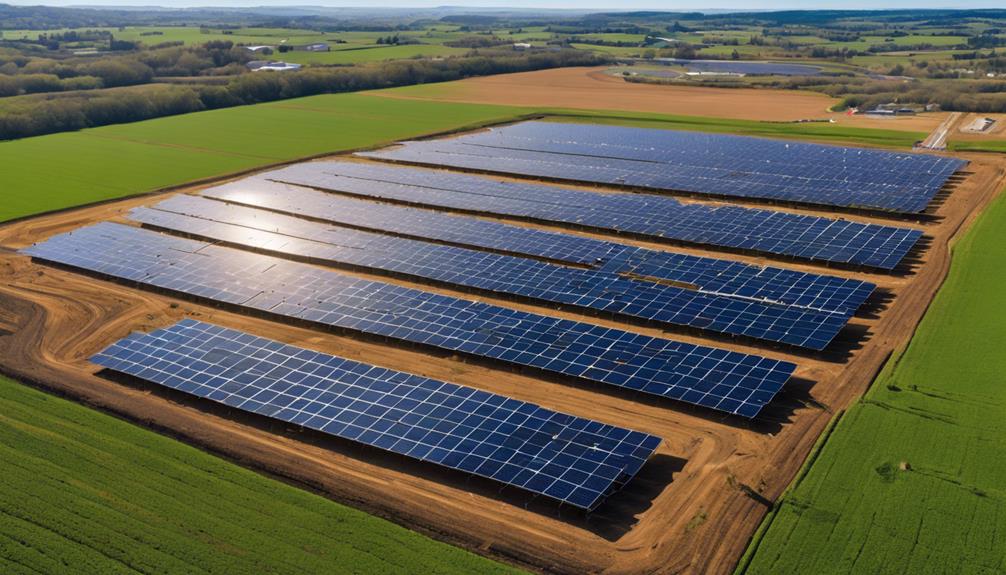
Solar energy has become an increasingly popular option for homeowners and businesses looking to reduce their carbon footprint and save on energy costs. One crucial component of a solar energy system is the solar panel battery bank. In this guide, we will explore what a solar panel battery bank is, its benefits, types, installation considerations, and maintenance tips to ensure optimal performance.
What is a Solar Panel Battery Bank?
A solar panel battery bank is a collection of batteries that store energy generated by solar panels. This stored energy can be used during periods when solar production is low, such as at night or during cloudy days. Battery banks are essential for off-grid solar systems, allowing users to remain independent from the utility grid. They also provide backup power during outages for grid-tied systems, making them a valuable investment for those concerned about reliability and energy security.
Benefits of Installing a Solar Panel Battery Bank
Investing in a solar panel battery bank comes with numerous benefits. First and foremost, it enhances energy independence. By storing excess energy produced during the day, you can use it when needed, reducing reliance on grid power. This is particularly helpful during peak energy hours when electricity rates are higher. Additionally, a battery bank can provide backup power during outages, ensuring your essential appliances continue to run. Furthermore, it contributes to a greener environment by maximizing the use of renewable energy.
Types of Solar Panel Battery Banks
When considering a solar panel battery bank, it’s essential to understand the different types available. The most common types include lead-acid, lithium-ion, and saltwater batteries. Lead-acid batteries are the most traditional option, known for their affordability but requiring regular maintenance and having a shorter lifespan. Lithium-ion batteries, on the other hand, are more efficient, have a longer lifespan, and require less maintenance, making them a popular choice among modern solar users. Saltwater batteries are a newer technology boasting environmentally friendly materials but may not yet be as widely available or cost-effective.
Factors to Consider When Choosing a Solar Panel Battery Bank
Selecting the right solar panel battery bank for your needs involves several considerations. First, assess your energy consumption to determine the storage capacity required. The capacity, typically measured in kilowatt-hours (kWh), indicates how much energy the battery can store. Additionally, consider the depth of discharge (DoD), which tells you how much of the battery’s capacity can be used without damaging it. Other factors include the battery’s efficiency, lifespan, installation requirements, and warranty. Finally, consider your budget, as prices can vary significantly between battery types.
Installation Process of a Solar Panel Battery Bank
The installation of a solar panel battery bank should be performed by a qualified professional to ensure safety and efficiency. The process typically starts with an assessment of your current solar panel system and energy needs. The installer will then determine the best location for the battery bank, ensuring adequate ventilation, accessibility, and protection from environmental factors. After the site preparation, the batteries will be installed, connected to the solar panels and inverter, and tested to ensure they operate correctly. Proper installation is crucial for maximizing the battery bank’s performance and lifespan.
Maintaining Your Solar Panel Battery Bank
To keep your solar panel battery bank functioning optimally, regular maintenance is essential. For lead-acid batteries, this includes checking electrolyte levels and cleaning terminals to prevent corrosion. Lithium-ion batteries generally require less maintenance but should still be monitored for any signs of wear or malfunction. Periodically reviewing your battery bank’s performance metrics can help you detect any issues early on. Additionally, ensure that your solar panels are clean and functioning efficiently, as this will directly impact the energy available for storage.
Cost Considerations for Solar Panel Battery Banks
The cost of a solar panel battery bank can vary widely depending on the type, capacity, and brand. On average, homeowners can expect to spend between $5,000 to $15,000 for a quality battery bank installation, including both the batteries and installation costs. It’s important to consider the long-term savings on energy bills and potential incentives or rebates that can offset the initial investment. Comparing different battery options and consulting with a solar energy expert can help you find the best solution within your budget.
The Future of Solar Panel Battery Banks
The future of solar panel battery banks looks promising as technology continues to evolve. Innovations in battery technology, such as improved energy density, faster charging times, and more sustainable materials, are being developed to enhance the efficiency and lifespan of battery banks. As more homeowners and businesses adopt renewable energy solutions, the demand for reliable and efficient battery storage will likely increase. Additionally, advancements in smart home technology may allow for better integration and management of solar energy and battery storage systems, paving the way for a more sustainable future.
In conclusion, a solar panel battery bank is a vital component of a renewable energy system, offering numerous benefits, including energy independence and backup power. By understanding the different types of battery banks, installation processes, and maintenance practices, you can make an informed decision that maximizes your investment in solar energy. As technology advances, the future of solar panel battery banks will continue to evolve, making them an increasingly attractive option for sustainable living.





